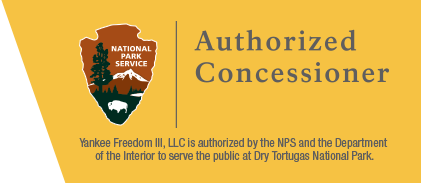Fort Jefferson Facts

Fort Jefferson is located within the Dry Tortugas, a group of small islands in the Gulf of Mexico. Just 70 miles due west of Key West, Florida, it’s the largest masonry structure in the western hemisphere. Fort Jefferson, which was named after the third president of the United States, was originally conceived to serve the military by protecting the Florida coastline.
Construction for the fort began in 1846 and although it is composed of more than 16 million bricks, Fort Jefferson is still considered to be an unfinished fortress. Designed as an immense gun platform, the fort was to be heavily armed and guarded at all times with the capability of destroying any enemy ships that were able to make it through the treacherous coral reefs without crashing and sinking.
During the Civil War, the federal government decided to use Fort Jefferson as a prison even though the fort was still in construction. It wasn’t long before criminals of the Union army were brought there, sentenced to what became known as Devil’s Island. Being sent to Fort Jefferson was considered to be a fate worse than death. It meant hard labor in the blazing sun, very little food and a scarcity of fresh water. It also meant facing swarms of mosquitoes, bedbugs, hazardous weather conditions, cruel guards, bouts of malaria and yellow fever and wearing a ball and chain while working day and night to build the enormous brick structure. Although most of the prisoners who occupied Fort Jefferson were in the military, there were several civilian prisoners brought there during the height of the Civil War. The fort’s most famous, or perhaps infamous, resident was Dr. Samuel Mudd, who was convicted as part of the conspiracy to assassinate President Abraham Lincoln.
Today, thousands of people travel by ferry or seaplane to tour the historic grounds of Fort Jefferson. They come to see the impressive rifled Parrot guns and the remaining six of only twenty-five, 25-ton Rodman cannons left in existence. Guests enjoy walking inside the walls of the imposing fort, a place where Confederate army soldiers, officers and their families lived alongside prisoners, slaves and civilian workers.
On January 4, 1935, President Franklin D. Roosevelt designated the fort as Fort Jefferson National Monument, and it was listed on the National Register of Historic Places in 1970. In October of 1992, Fort Jefferson and the Dry Tortugas were established as a National Park.




